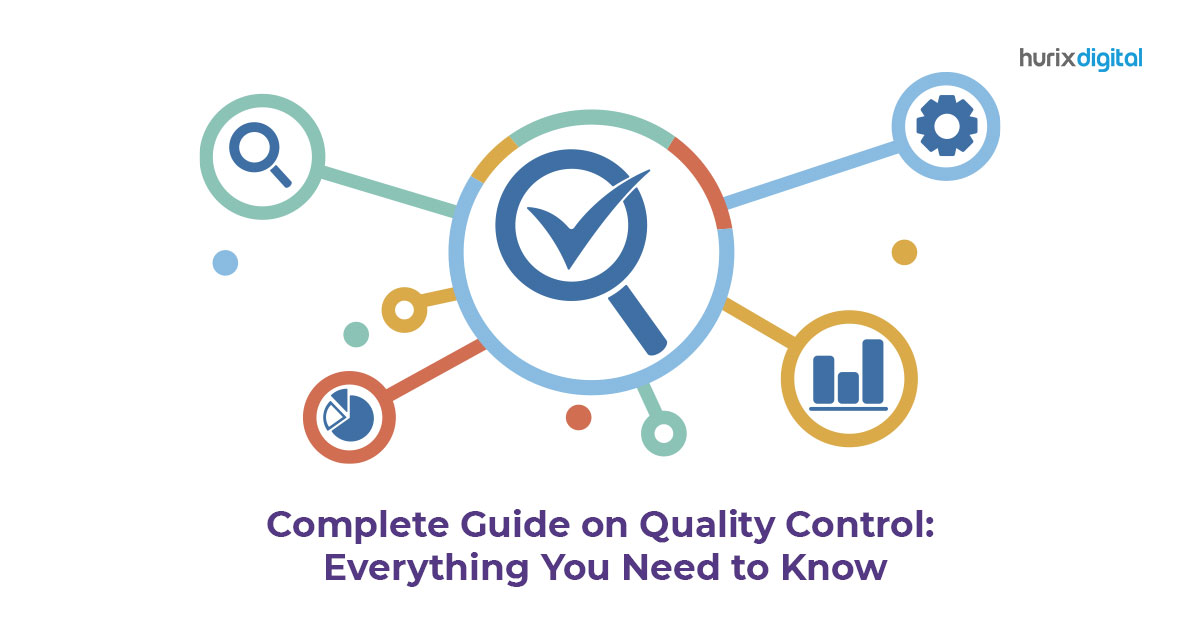Differences Between Quality Assurance and Quality Control
Quality is not an act, it’s a habit. For every organization, delivering products and services of the highest quality is of paramount importance. Having an effective quality management system to monitor the quality of products and services can contribute enormously to the success of projects. Quality Assurance (QA) and Quality Control (QC) form an integral part of every quality management plan. It is crucial for every stakeholder to understand the intricacies of QA and QC along with their differences.
More often than not, Quality Assurance and Quality Control are confused. This ambiguity, if persisted, can hamper the projects and the desired results. Although QA and QC are both aspects of quality management, they are fundamentally different in their focus.
Also Read: Hurix Collaborates with Quality Matters to Improve Online Education
What is Quality Assurance?
Quality Assurance is a strategy of prevention as it focuses on preventing defects. It is focused on planning, documenting and setting guidelines that are necessary to assure quality output. Quality Assurance ensures that the approach and strategy designed for the projects are implemented effectively. The QA activities include monitoring and verifying that the process is being followed and is operative.
Quality Assurance planning is undertaken at the beginning of a project. Undertaking QA at the beginning helps in mitigating the risks that have been identified.
Also Read: How QA Services Can Improve Your Business Competitiveness
What is Quality Control?
Quality Control is a strategy of detection as it focuses on identifying defects in products and services. It focuses on all the activities that are designed to determine the level of quality of delivered products and solutions. Quality Control ensures that the project deliverables meet the desired quality standards. QC activities involve the verification of outputs. The solutions are checked against customer requirements, with various checks being conducted at planned points in the development lifecycle.
Related Read: Why is Quality Control Important for a Business?
Difference between Quality Assurance (QA) and Quality Control (QC)
It is crucial for the success of the project to understand the difference between Quality Assurance and Quality Control. QA is a set of actions taken to design and manufacture a safe and effective product by building quality controls into the product life cycle. QC is a set of actions that test the procedures used to verify that a product is safe and effective after manufacturing.
Here are 5 major differences between Quality Assurance and Quality Control to help you understand the concepts better.
1. Proactive vs Reactive
Quality Assurance is proactive. It works towards preventing defects before they occur through process design while Quality Control is reactive and it identifies defects after their occurrence.
QA focuses on steps to design processes, such as documenting standard operating procedures (SOPs). It makes sure procedures and processes are followed to deliver a safe, effective product of desired quality.
QC focuses on testing the products once they are manufactured to ensure all the safety measures are met. It also ensures they meet the desired standards of quality and efficacy.
2. Process-oriented vs Product-oriented
Quality Assurance is process-oriented. It solely focuses on preventing quality issues. The processes are designed to avoid any defects in the deliverables.
Quality Control is product-oriented. It identifies the quality issues in the products that are already manufactured. QA involves the processes that create the product, while QC is focused on the product output.
Quality Assurance Processes
- Documentations
- Audits
- Process management
- Personnel training
- Change control management
Quality Control Procedures
- Batch monitoring
- Inspection
- Product sampling
- Validation
- Testing
3. Controls the Entire System or Controls Each Process
Quality Assurance controls the entire system of product development including various processes and procedures designed to ensure quality standards. Quality Control measures parts of the system including the outputs.
The QA system dictates various processes to ensure inputs are consistently safe and effective, such as auditing suppliers and raw materials. QC efforts are more inclined towards testing parts of the product once they are ready.
4. Used Mainly During Creation Process or Testing Process
QA activities act like a roadmap for creating high quality products and services. They include defining quality standards for product design, manufacturing, packaging, distribution, marketing and sales. These standards act like guidelines during the entire process of product development and ensure the output meets the desired standard of quality.
QC activities are the verification or testing criteria for manufactured products. They include verification of various parts of the product post-production and before distribution. QC confirms the safety of the products.
5. Team Effort vs Individual Responsibility
Quality Assurance activities involve the entire quality management team. Each team member is responsible for the standard operating procedures and contributes towards designing the quality measures.
Quality Control is the responsibility of a particular personnel within the quality management team whose duties include following the standard operating procedures for product testing. QC staff documents the results of product testing based on the standardized procedures for product validation.
Also Read: Top Reasons Why Companies Outsource Quality Assurance Services.
Point of View:
Creating a New Gold Standard in Quality Assurance
Benefits of Quality Management:
Quality management includes both Quality Assurance and Quality Control. Having an effective quality management system in place will help organizations streamline their process of delivering quality. This mechanism works towards identifying the root cause that hinders the quality of products and then developing strategies to tackle these issues. Using a holistic quality management approach ensures that the team meets the desired quality standards.
Formulating and executing a Quality Management Plan leads to –
- Greater customer satisfaction
- Motivated team that contributes towards attaining high quality standards
- Avoiding rework
- Confidence in planning and executing
- Trust of stakeholders
Conclusion
Quality Assurance aims at improving the process as a whole so that the issues are prevented from occurring in the first place. Quality Control is a subset of a larger set of QA; it creates safe measures to ensure that products or services are of high quality through testing, thereby ensuring that poor quality products do not reach the customers.
Both QA and QC form an integral part of the quality management process. Understanding the difference between them will help the quality management team to design, evaluate and execute their plans better to ensure an output of the highest quality.
Need to know more about our Products & Services ? Drop us a note at marketing@hurix.com

Vice President – Content Transformation at HurixDigital, based in Chennai. With nearly 20 years in digital content, he leads large-scale transformation and accessibility initiatives. A frequent presenter (e.g., London Book Fair 2025), Gokulnath drives AI-powered publishing solutions and inclusive content strategies for global clients








